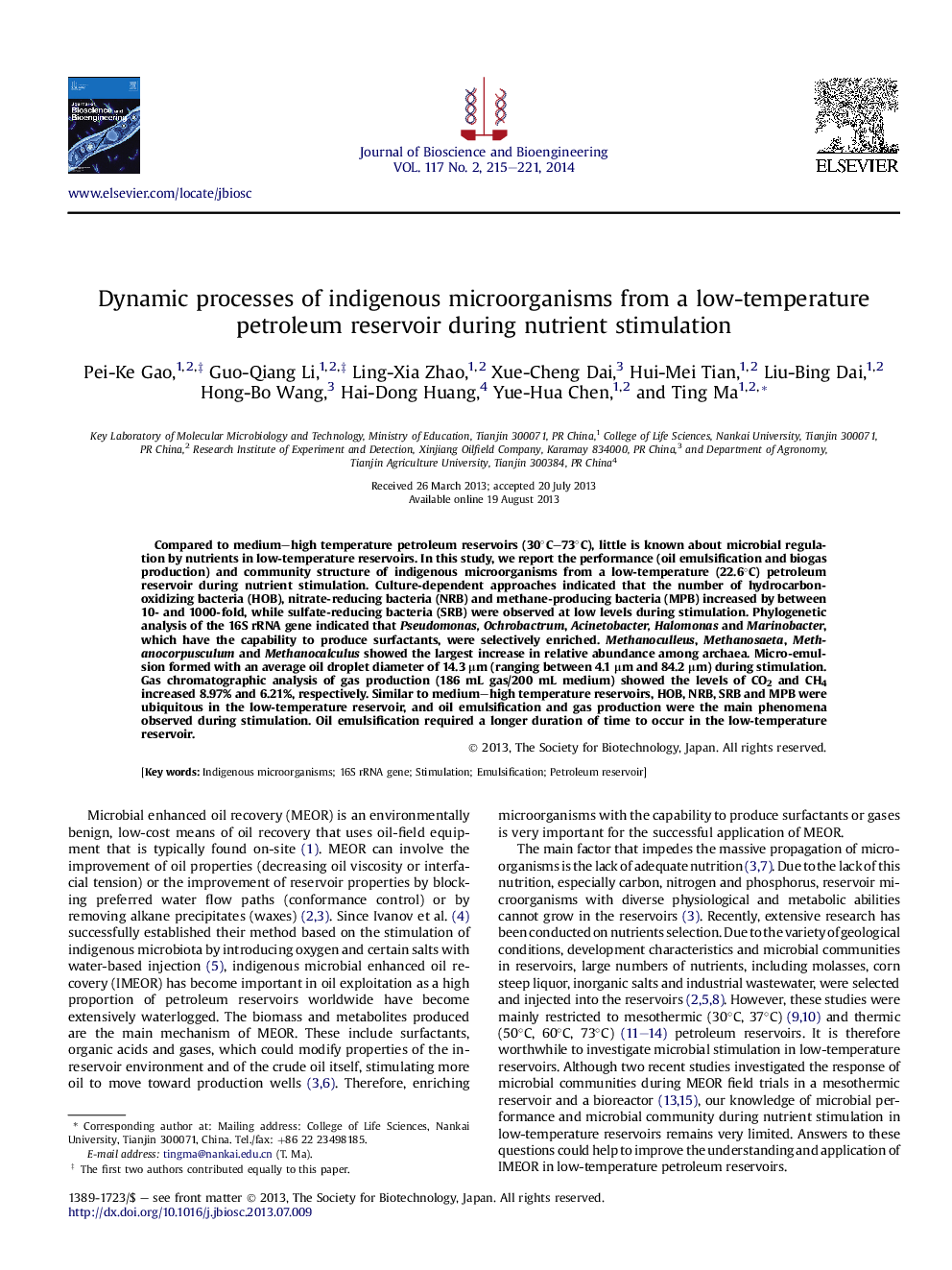| Article ID | Journal | Published Year | Pages | File Type |
|---|---|---|---|---|
| 20816 | Journal of Bioscience and Bioengineering | 2014 | 7 Pages |
Compared to medium–high temperature petroleum reservoirs (30°C–73°C), little is known about microbial regulation by nutrients in low-temperature reservoirs. In this study, we report the performance (oil emulsification and biogas production) and community structure of indigenous microorganisms from a low-temperature (22.6°C) petroleum reservoir during nutrient stimulation. Culture-dependent approaches indicated that the number of hydrocarbon-oxidizing bacteria (HOB), nitrate-reducing bacteria (NRB) and methane-producing bacteria (MPB) increased by between 10- and 1000-fold, while sulfate-reducing bacteria (SRB) were observed at low levels during stimulation. Phylogenetic analysis of the 16S rRNA gene indicated that Pseudomonas, Ochrobactrum, Acinetobacter, Halomonas and Marinobacter, which have the capability to produce surfactants, were selectively enriched. Methanoculleus, Methanosaeta, Methanocorpusculum and Methanocalculus showed the largest increase in relative abundance among archaea. Micro-emulsion formed with an average oil droplet diameter of 14.3 μm (ranging between 4.1 μm and 84.2 μm) during stimulation. Gas chromatographic analysis of gas production (186 mL gas/200 mL medium) showed the levels of CO2 and CH4 increased 8.97% and 6.21%, respectively. Similar to medium–high temperature reservoirs, HOB, NRB, SRB and MPB were ubiquitous in the low-temperature reservoir, and oil emulsification and gas production were the main phenomena observed during stimulation. Oil emulsification required a longer duration of time to occur in the low-temperature reservoir.
